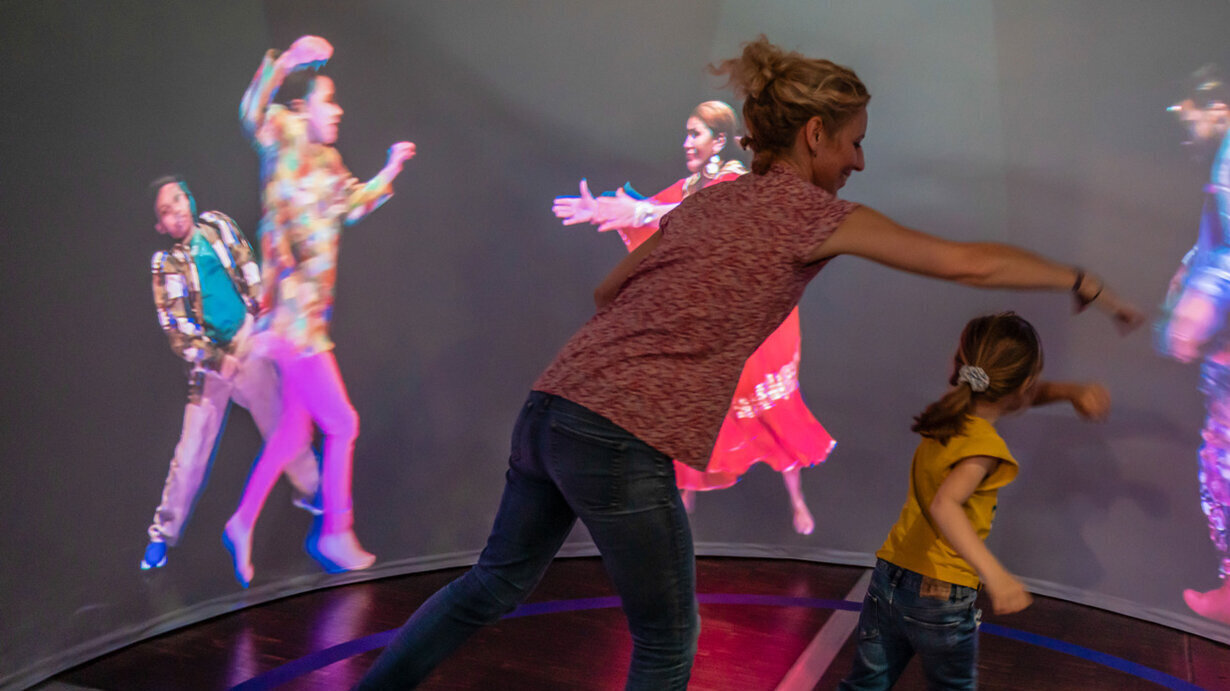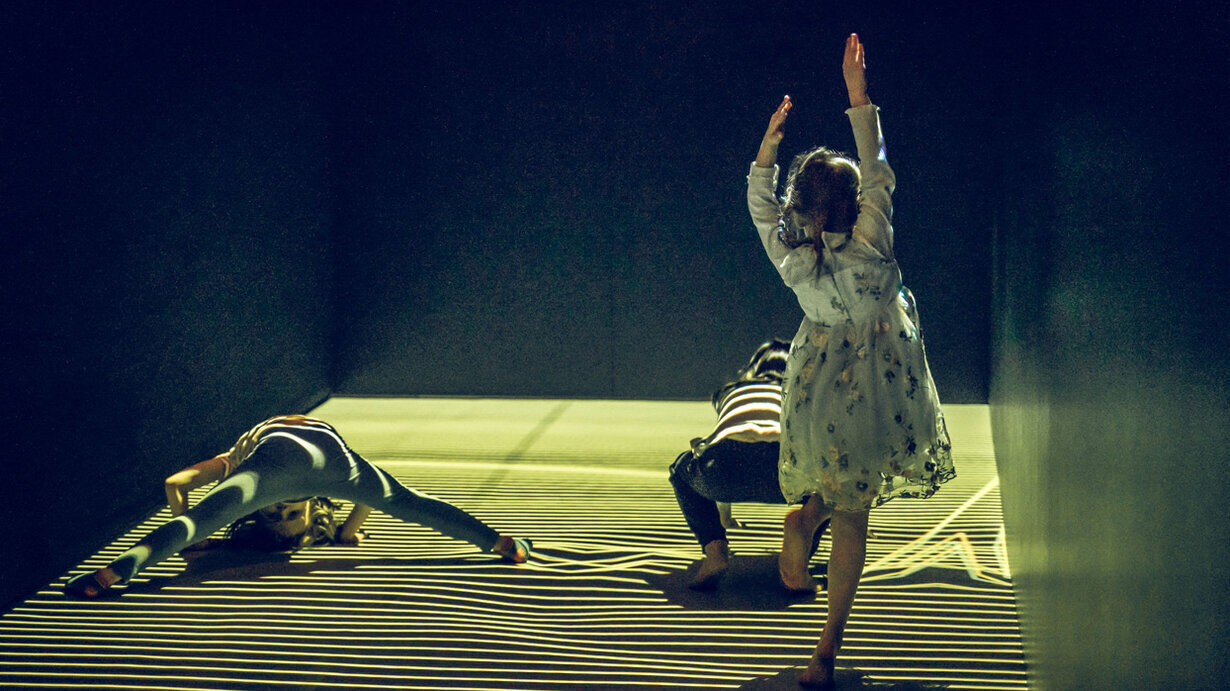The exhibition
Trailer of the exhibition Dance (0'30)
Dance invites children from 4 years old and their companions of all ages to participate sometimes actively, other times just watching.
Turn, jump, walk and come together. These four verbs define the exhibition by allowing you to go through different styles, techniques and cultures. They are both essential dancing movements and familiar to all children.
The visit is both dynamic and contemplative, though unique dancing devises created by choreographers, videos and didactic experiences. Every 30 minutes, young and old are invited to join the collective dance and get to know three different dances and travel through different periods.
Practical informations
-
€15 | €12 | Our prices
-
From age 4
-
Trilingual exhibition (French, English, Spanish)
-
The Cité is open from Tuesday to Saturday 10.00 am - 6.00 pm and 10.00 am - 7.00 pm on Sunday.
Accessibility
- Accessible to visually impaired visitors
- Accessible to visitors with reduced mobility
- Accessible to deaf and hard of hearing visitors
- Accessible to cognitively impaired visitors
- Accessible to signing deaf visitors
Plan your visit
Small pushchairs are allowed inside the museum. This exhibition area can be accessed by lift.







